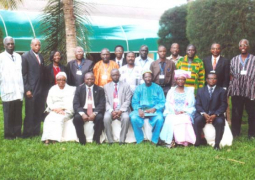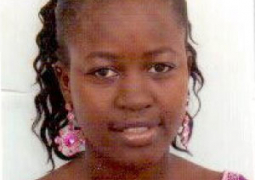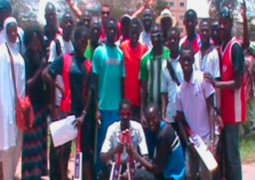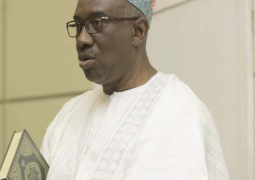
In
a February 1998 report, Amnesty International (AI) alleged that several mass graves
for victims of extrajudicial killings exist in Niaguis and at Niamalang bridge.
According to AI, an unknown number of civilians have been killed by civilian
authorities or soldiers and have been buried secretly in these mass graves
since the early 1990’s. There has been no independent confirmation of these
allegations.
Sporadic
fighting continued through 1999 in the Casamance area in the southern part of
the country between the Government and the secessionist Movement of Democratic
Forces in the Casamance (MFDC). In January the Government and the leadership of
the MFDC began a new peace initiative with a meeting between President Diouf
and MFDC head Abbe Augustine Diamacoune Senghor. The MFDC leadership then held
a conference--the “days of reflection”--in Banjul, the Gambia, in June 1999 to
develop a unified position for advancing the peace process.
In
its annual report published in July 1999, African Assembly for the Defense of
Human Rights (RADDHO - a local human rights organization) alleged that MFDC
rebels were responsible for the widespread and indiscriminate use of land mines
in the Casamance. According to RADDHO the rebels planted the mines in an effort
to terrorize both the government security forces and the civilian population.
Although it was difficult to determine the extent of their use in the
Casamance, RADDHO claimed that up to 80 percent of the arable land in the areas
of Ziguinchor, Sedhiou, Oussouy, and Bignona were unusable due to the land
mines. RADDHO also estimated that between 1997 and 1998 land mines killed and
injured some 500 civilians in the Casamance.
On
12 February 1999, the Government released 123 suspected MFDC members who had
been detained in Dakar, Ziguinchor, and Kolda without trial, some for several
years, on grounds of compromising or plotting against the security of the
State. The courts ordered their release following the January 1999 meeting
between President Diouf and MFDC leader Abbe Diamacoune, which was the
beginning of an effort to establish a peace process in the Casamance. The MFDC
had demanded the release of all political detainees in connection with the
Casamance conflict as a condition for dialog. According to the AI report issued
in June 1999, 110 suspected MFDC rebels remained without trial in prisons throughout
the country; however, on 30 December 1999 the Government released 44 persons
who had been detained in connection with the Casamance conflict.
The
internal talks of the rebellion movement hosted in Banjul during June and July
1999, marked an historic turning point for the Casamance peace settlement
process which seeks to end the conflict in this region. These talks and the end
of the crisis in neighboring Guinea-Bissau have helped pave the way for direct
peace negotiations between the GOS and the MFDC during late December 1999.
On
26 December 1999, the Government and MFDC leaders met in the Gambia to begin
negotiations on the future of the Casamance. During these talks, the two
parties agreed to an immediate ceasefire in the Casamance. The parties also agreed
to meet face to face at least once a month to negotiate a peaceful future for
the region. At year’s end, neither side had a concrete proposal to bring to the
negotiating table; however, the parties developed a framework for discussion.
President
Wade said he wanted to meet with rebel leaders to hammer out a broader peace
agreement. But despite the truce, hard-core elements of the MFDC’s armed wing
have continued to fight, even attempting to disrupt Senegal’s presidential
election in February 2000. The militant wing of the MFDC is committed to
independence at any cost.
To
be continued……………
BY:
SAIDINA ALIEU JARJOU
Alias
Dr.ABS Taal Jr.
Read Other Articles In Article (Archive)

WAHO Workshop on best practices of cataract surgery ends in Banjul
Jul 18, 2011, 1:14 PM




